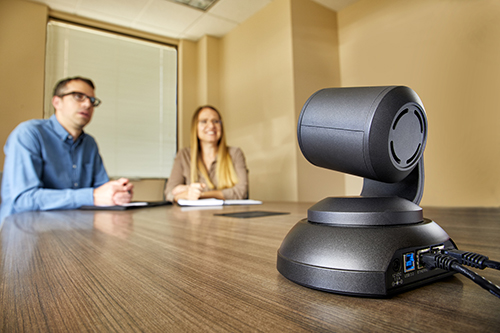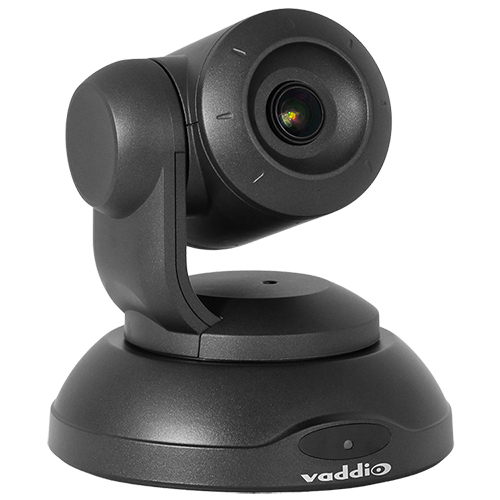Posted on 4/4/2019 by Vaddio Team
As millennials continue to grow in the corporate workforce, it’s important to consider their impact on workplace design. One of the biggest additions to the workplace in the past ten years is the huddle room. And if you want to create a working environment friendly to millennials and the future of corporate life, you need to start catching up and add huddle rooms to your office plans.
What Is a Huddle Room?
Generally speaking, a huddle room is a smaller meeting space that features collaborative technology like videoconferencing and connectivity. They are designed for free-flowing expression of ideas as well as impromptu meetings where colleagues can get together and quickly meet (sometimes for only a few minutes to review an idea). Other times, it’s for more robust videoconferencing sessions.
This concept is different from the more “traditional” approach that workers 40 years old and older are used to in which a company provides a single meeting space, typically larger in scale, that hosts structured and often more formal meetings that last at least an hour.
Why Millennials?
Millennials thrive in huddle rooms and consider them a necessary part of driving their daily successes at work, whereas other generations and companies haven’t fully embraced the importance of these spaces. It’s critical to gain a better understanding of millennial behavior and to embrace new, innovative ways of approaching business — one of the biggest of which is the huddle room.
One recent survey of corporate end users indicates that close to 40 percent of respondents added at least one huddle space recently. Of that group, only about one quarter of them added just one huddle room. The significance of this study shows the pervasive adoption of the huddle space, showing more and more employees are demanding the work environments it supports.

Updating the Workplace for New Expectations
Millennials — You cannot speak about the huddle room without talking about the millennial generation, a group that will occupy over 50 percent of the work force in just a few years. Millennials tend to walk into their first day of work with at least one, if not two, videoconferencing devices — their cell phones and tablets. Granted, many in the pro AV community and basically anyone over 40 might disagree with the concept of cell phones and tablets being categorized as videoconferencing devices, but make no mistake: they’re in the minority. This creates a technology expectation corporations need to manage. It also creates overwhelming security issues that need to be addressed.
It’s also noteworthy that in general, millennials don’t mind having their pictures being taken (“selfies,” anyone?) and embrace communicating using video in their social lives. It’s only natural they demand this in the workplace. Conversely, the average person over 40 would prefer not to use video chat in favor of a phone call. Where a 45-year-old does not put a premium on videoconferencing based on a lack of comfort, a millennial demands it based on communication patterns.
With the videoconferencing example in mind, it’s a safe leap of faith to say the millennial generation is very tech-savvy. They want to interact with technology. They want to be exposed to more of it. That’s in contrast to gen-Xers, for the most part.
Corporate Adopters of the Huddle Space
What began in technology-focused companies in Silicon Valley has spread across the country. It is estimated that there are over 50 million huddle spaces in place today, according to a Wainhouse 2017 research report, and that number is set to nearly double in the next five years, according to a Knoll workplace executive survey. While 10 years ago, the corporate profile for this form of meeting space shared similar characteristics, that cannot be said today. From the start-up to top financial companies, huddle spaces are being embraced and significant corporate investments are being made to build them. Today’s profile of a huddle space user is less about the vertical industry and more about the average age of the employees. At the end of the day, every industry and every size company is using huddle spaces.
How do you ensure successful implementation? What are the essential components for a huddle room? Find out more about Huddle Spaces from our new e-book.

 All News
All News